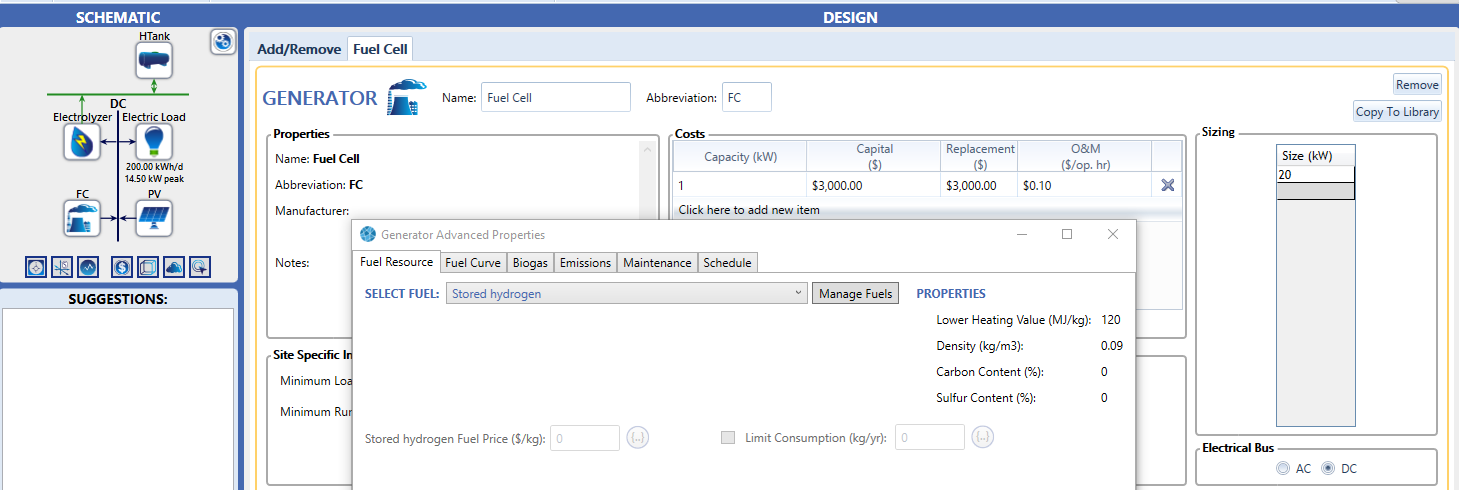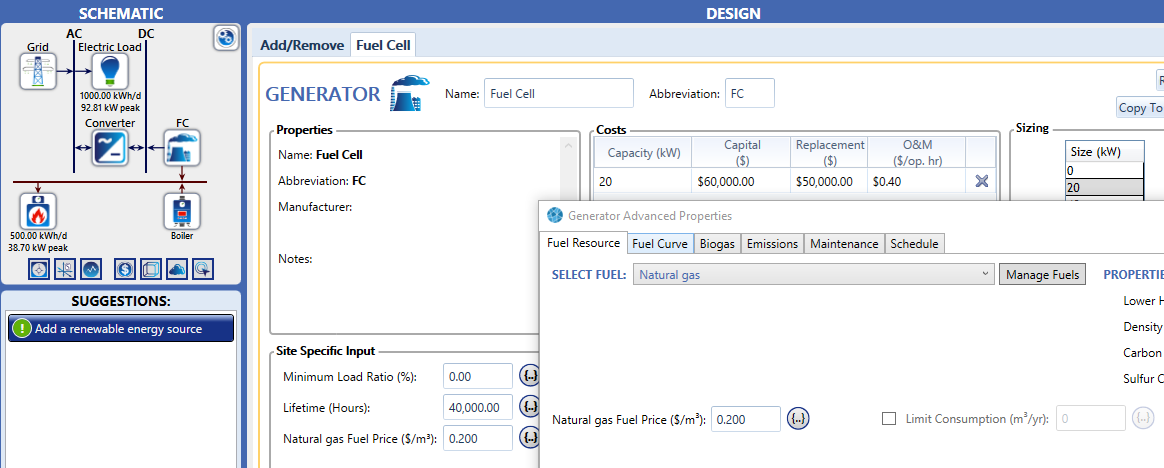
HOMER Pro 3.16

A fuel cell is a type of DC generator, so you can use the generator component to model a fuel cell in HOMER.
If the system will electrolyze excess electricity to make hydrogen that the fuel cell will then consume, then add an electrolyzer and a hydrogen tank to your design, and specify the fuel cell's fuel as "Stored Hydrogen".

(View Sample File-StandalonePVHydrogenSystem in HOMER Pro for additional help)
If the fuel cell will consume an externally-supplied fuel that goes through a reformer before entering the fuel cell, then you have to use the generator module to model both the reformer and the fuel cell. That is, your cost inputs should include both fuel cell and reformer costs, and the fuel curve should show the electrical output of the fuel cell versus the fuel input to the reformer. You should not add a reformer to the schematic unless you intend to serve an external hydrogen load.

(View Sample-GridConnectedFuelCell in HOMER Pro for additional help.)
Note: The hydrogen load is entirely different from a fuel cell. Use a hydrogen load only if you want to simulate a system that produces hydrogen for some external use. To simulate a system that electrolyzes excess electricity to produce hydrogen, stores that hydrogen in a tank, and then uses the hydrogen to supply a fuel cell, you do not need a hydrogen load.
